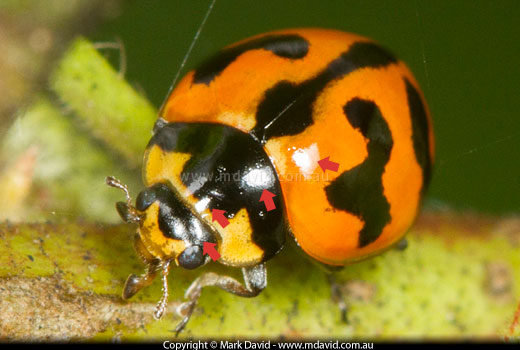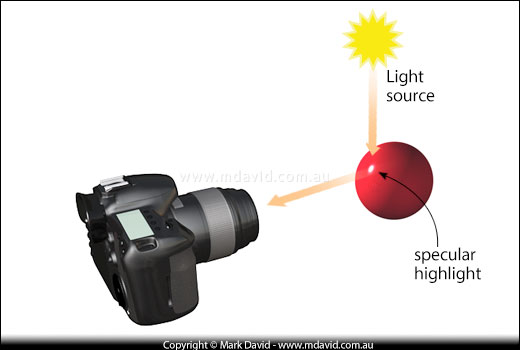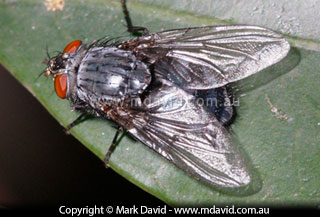
The term ‘specular highlight’ sometimes comes up in photography. Here’s what it means.

The red arrows point to some of the specular highlights in this photo of a Ladybird.
It’s probably easiest to say what a specular highlight is by just pointing to some examples. So that’s what I did in the photo above.
You’ll see that specular highlights are the blobs of bright light that you tend to see more often than not on shiny surfaces on sunny days (although in the photo above they were caused by the flash). Shiny, wet surfaces tend to have strong, hard-edged specular highlights and matt surfaces tend to have weak soft-edged specular highlights.

How this relates to photography
Pretty much every time you see a shiny object on a sunny day you’re going to get specular highlights. For example, shiny car bodies will have them wherever the sheet metal hits the perfect angle to reflect the sun. Because the specular highlights are reflecting the actual light source, much like a mirror (the word specular actually means ‘like a mirror’) then those tiny blobs of highlight can be insanely, savagely bright! So they are almost certain to be badly blown-out (extremely overexposed) in your photos.

The tiny dots of specular highlights (caused by sunlight) in this photo emphasise the frog’s shiny, textured skin.
Normally we don’t like having overexposed bits in our photos, but in the case of specular highlights it’s usually not so bad, and pretty much unavoidable too. And in fact they can make a scene look more normal.
When are specular highlights a problem?

This time, the specular highlights (caused by a flash) are so bad they distract us.
If the specular highlights are spreading too far into your photo compared to how they look in real life then it’s likely that the whole photo is a bit overexposed, which means you need to reduce the exposure a bit. The way you do that with these super-automated modern digital SLR cameras these days is to use exposure compensation. Exposure compensation will tell your camera to adjust its exposure up or down the way you want it.
Another time when specular highlights can be a problem is when you use a flash, like in the photo of the fly above. If your flash is the pop-up type of flash that sits just above the lens, then the light from that flash is more likely to bounce straight back into the lens off shiny objects. That can be especially noticeable in macro photography when you’re photographing shiny critters like beetles or ants or insect wings. There are different ways of easing that problem and they include:
- Using an external flash mounted at a greater distance from the lens
- bouncing the light off a big white surface instead of aiming it directly at the subject
- using a diffuser to turn a small flash light into a big sheet of light








